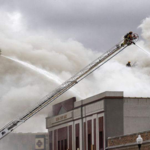Grants help bankers improve workforce housing in their regions
In Duluth, Minn., 20 distressed houses scattered about town will soon get a Cinderella-style roof-to-foundation renovation needed to make them livable. Once they’re ready for their close-ups, these fresh-faced gems will be sold for below market-value prices, but not to just anyone. Their buyers will be owner-occupants with an average income of 60 percent of the median for the area. [Continue]










